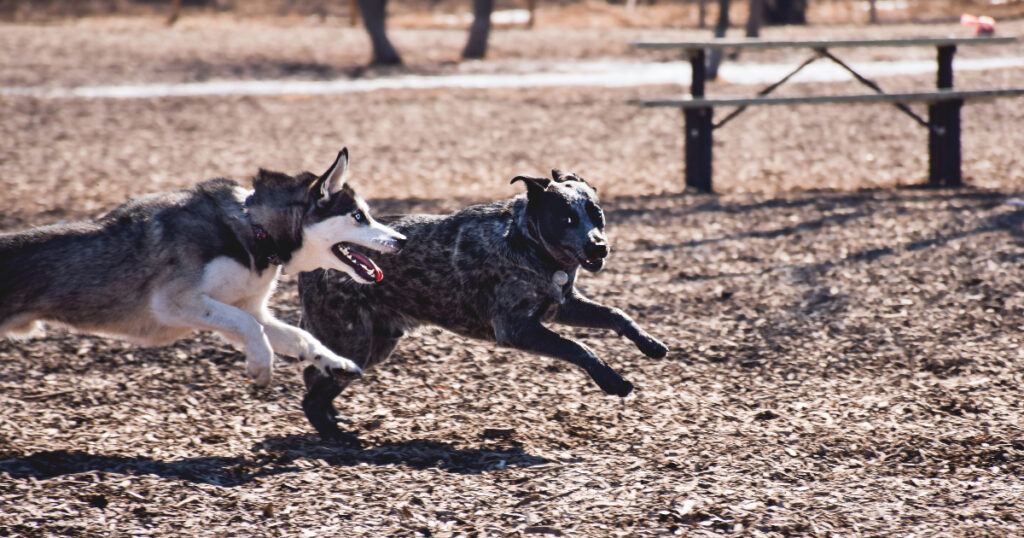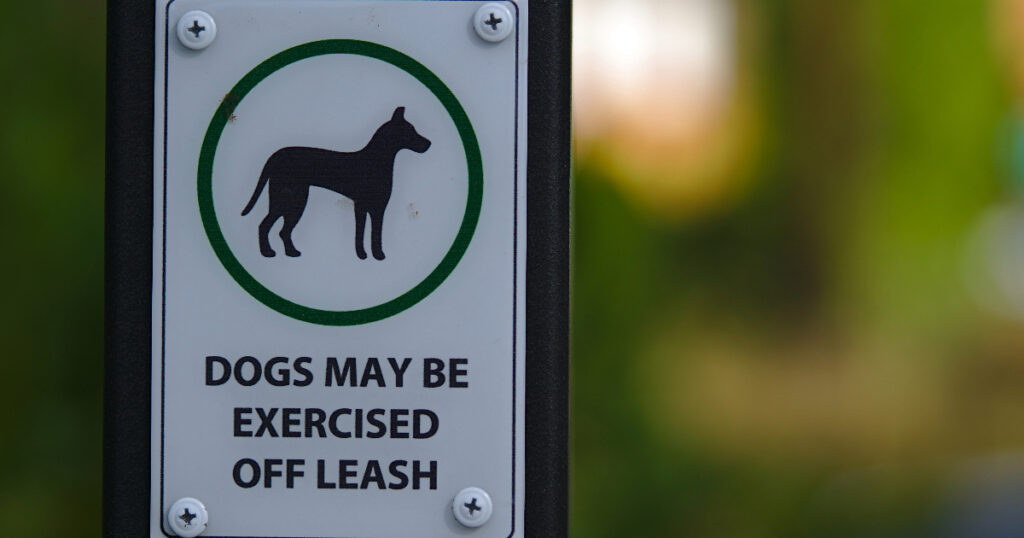Dog owners want to provide the best possible lives for their beloved pets. However, questions arise over whether keeping dogs on leashes constantly deprives them of fulfillment.
Some argue dogs need off-leash freedom to exercise their natural behaviors and bond more closely with their owners. But are the risks of unleashed dogs worth the potential rewards?
Determining what’s best requires examining all facets of this issue. There are persuasive points on both sides of whether leashing dogs is cruel or responsible pet ownership.
The Debate Around Dogs Off-Leash
For many dog owners, letting their furry friend run free without a leash is a joyful experience. Watching your dog bound across a field, tail wagging happily as they explore new sights and smells, can be incredibly rewarding. However, some people believe keeping dogs on a leash at all times is the only responsible choice. This debate around whether it’s cruel to not let dogs off-lead has arguments on both sides.
Reasons Some Advocate For Off-Leash Freedom

There are certainly some persuasive reasons why dog lovers argue for allowing off-leash time. Many experts point out that dogs need adequate exercise and mental stimulation. Allowing them to walk freely allows dogs to burn off excess energy in a way that on-leash walks may not satisfy.
Off-leash time also provides dogs with environmental stimulation. They can engage their powerful sense of smell tracking different scents. This provides mental engagement in exploring new environments unleashed.
Additionally, some argue that keeping dogs leashed constantly is inhibiting their natural behaviors. Dogs may feel frustrated at their inability to approach other people or dogs when leashed. Giving them some off-leash time allows dogs to socialize and play more naturally.
Many also believe that regularly trusting dogs off-leash strengthens the human-animal bond through positive shared experiences. Spending off-leash time together can be a rewarding chance for both pet and owner to enjoy nature and each other’s company.
Concerns Around Allowing Dogs Off-Leash
However, there are equally compelling reasons to be cautious about allowing off-leash freedom. Advocates for leashing point out very real dangers unleashed dogs can face.
One of the greatest risks is the potential for unleashed dogs to be hit by vehicles. It only takes a momentary lapse in response to recall if your dog sees something that excites them. Once a dog dashes into the road, drivers may not be able to stop in time. Tragically, many dogs lose their lives this way annually.
Unleashed dogs also face numerous other hazards. They may eat something toxic while out of sight, like food scraps, chemicals, or dangerous plants. Certain foods can cause intestinal blockages requiring emergency surgery to save a dog’s life. Toxins can cause severe poisoning.
Interactions with wildlife can also pose threats. Well-meaning dogs may give chase and end up provoking creatures that then attack them in self-defense. Dogs can suffer severe injuries in encounters with wildlife.
Unleashed dogs additionally risk negative interactions with other pets and people. Rushing up to leashed dogs can spark fights if the leashed dog feels threatened. Friendly greetings may knock people over, scratch bare skin with paws, or damage clothing.
Problems Unleashed Dogs Can Cause
Letting your dog off-leash also opens the possibility of them negatively impacting others or their property. Unwatched dogs may relieve themselves on private lawns and gardens or personal items left in yards. Dog feces carries health risks to humans, especially children exposed while playing outside.
Unleashed dogs tend to wander further than leashed ones. This means you may lose track of where they go to the bathroom, making it impossible to clean up after them. No one wants the unpleasant surprise of stepping in abandoned dog droppings!
Some unleashed dogs retain their natural hunting instincts. This drives them to chase local wildlife like squirrels and birds. For people who cultivate backyard habitats to support local ecosystems, an off-leash dog devastates their conservation efforts. Even well-behaved dogs can surprise owners by attacking outdoor pets or destroying property once unleashed.
Unleashed dogs also disrupt the environment and other people’s enjoyment of public spaces. Their presence may startle and stress wildlife. People picnicking or birdwatching may find dogs begging for food or disrupting the wildlife they came to see. Even friendly greetings from unknown dogs make some people profoundly uncomfortable and anxious.
Legal Consequences Of Off-Leash Dogs

In many areas, keeping dogs off-leash violates local ordinances. Animal control officers can write citations carrying hefty fines if they catch owners with illegally unleashed pets. These fines generally start around $75 but may be as much as $300 or more per occurrence.
Failure to pay fines usually results in court dates and steadily increasing penalties. Multiple offenses may cause authorities to impound dogs until owners go to court. In extreme cases, authorities can seize dogs deemed dangerous due to repeat violations.
Some areas even impose criminal charges for owners whose illegally off-leash dogs seriously injure people. These cases may result in jail time on top of civil penalties. The consequences can follow owners for years, impacting housing, employment, and insurance rates.
Moreover, owners are financially liable for the damage their off-leash dogs cause. Medical bills, property destruction, and environmental damage can leave owners with thousands in out-of-pocket costs. Homeowner’s insurance often refuses claims stemming from violations of leash ordinances.
Balancing Dog And Community Needs

Responsible pet owners must balance their dogs’ exercise and enrichment needs with the safety of their pets, other people, animals, and property. With creative thinking, you can find solutions that meet your dog’s needs while respecting your neighbors and community.
Arranging “doggy play dates” with friends who have well-socialized and vaccinated dogs allows for off-leash socialization and play in controlled environments. Rotating which home hosts prevents one owner’s property from becoming overused.
Investing in a strong, high fence creates a secure outdoor space for your dog to romp and explore off-leash safely. Supervising during fence use prevents escapes and redirects undesirable behaviors like fence digging.
Long lines allow for off-leash experiences in appropriate areas without risking dogs dashing out of sight or control. The lightweight lines extend 20 or even 50 feet while allowing owners to reel dogs back in if needed. Using long lines requires open areas clear of major hazards and good obedience skills.
There are also many engaging activities to enrich leashed walks. Changing routes regularly provides mental stimulation from new scents. Incorporating training reinforces leash skills. Portable agility sets give dogs exercise jumping and weaving on a leash. And food puzzle toys reward patience on longer walks.
Finding The Right Balance For You And Your Dog
Deciding whether to allow your dog off-leash freedom requires an honest assessment of your pet’s training and temperament. Highly socialized dogs with excellent obedience skills who ignore distractions appropriately are the best candidates for off-leash privileges.
However, even the most well-trained dog can make mistakes in the excitement of free running. Analyze your community’s layout honestly to determine if potential risks like traffic and hazards are manageable. Remember that others’ safety, comfort, and property must be considered too when deciding where off-leash time is appropriate.
With the right precautions for your individual dog and environment, off-leash time can be rewarding. But controlling dogs appropriately through leashes or enclosed areas may be the only responsible choice in many situations. Finding the right balance allows you to give your dog enrichment while being a considerate community member. With creative solutions, you can provide a happy, healthy life meeting your pet’s needs on-leash or off.
FAQ
What are the benefits of off-leash time for dogs?
Off-leash time provides dogs opportunities to exercise vigorously, satisfy their curiosity through new sights and smells, and socialize with other dogs more naturally. Dogs bond more closely with owners through shared joy in activities like hiking or playing fetch off-leash. Mentally, unleashed dogs can fully engage their senses in exploring environments.
What risks do unleash dogs pose to wildlife?
Some dogs retain strong prey drives toward smaller animals, even with training. Off-leash dogs may instinctively chase local wildlife like rabbits, squirrels, birds, and deer. If they catch these creatures, they may kill or seriously injure them, devastating wild populations and ecosystems. Even if they don’t catch wildlife, the stress of being chased by dogs can cause long-term harm.
Why is it problematic when off-leash dogs approach leashed dogs?
Leashed dogs feel more vulnerable and defensive because they can’t flee perceived threats. Their instinct when an off-leash dog runs up is often to attack to protect themselves. This can provoke fights that injure one or both dogs and leave emotional scars. Off-leash dogs who ignore owner’s recalls approach leashed dogs to sabotage training and behavioral rehabilitation efforts too.
What legal penalties do owners risk by having dogs off-leash illegally?
Owners allowing illegal off-leash dogs face citations carrying fines of $75-$300 or more per incident in most areas. Failure to pay leads to criminal charges. Owners are also liable for damages and injuries their off-leash dogs cause, including costly medical bills and property damage. In severe attacks, owners may serve jail time. Insurance often refuses to cover incidents with illegally unleashed pets.
Conclusion
At the end of the day, every dog and owner’s circumstances are different. While one dog thrills at off-leash adventures, another may become overstimulated and reactive. And areas suitable for off-leash privileges in one neighborhood may be too risky in another.
There is no universally right choice when determining if off-leash time is appropriate. Instead, ethical pet owners must weigh their dog’s needs against potential dangers. With wisdom and creativity, we can provide enrichment that keeps communities safe and dogs happy.
The goal is not total freedom or total control – it’s balanced through responsible, compassionate choices.

